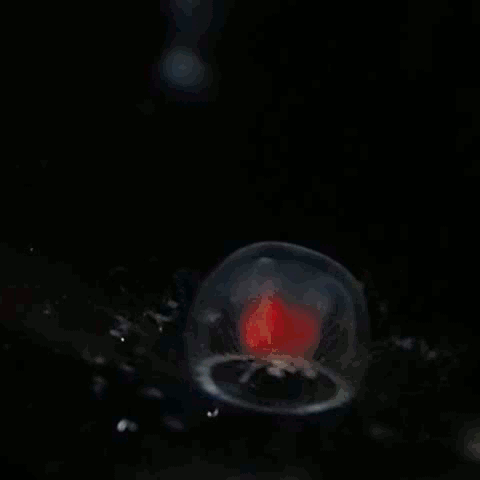Turritopsis Rubra on:
[Wikipedia]
[Google]
[Amazon]
 ''Turritopsis rubra,'' sometimes known as the crimson jelly, is a species of hydrozoan of the family Oceaniidae. Medusae of such species are informally called jellyfish.
''Turritopsis rubra,'' sometimes known as the crimson jelly, is a species of hydrozoan of the family Oceaniidae. Medusae of such species are informally called jellyfish.
 ''Turritopsis rubra,'' sometimes known as the crimson jelly, is a species of hydrozoan of the family Oceaniidae. Medusae of such species are informally called jellyfish.
''Turritopsis rubra,'' sometimes known as the crimson jelly, is a species of hydrozoan of the family Oceaniidae. Medusae of such species are informally called jellyfish.
Description
Adult medusae are energetic swimmers. They are 3–7 mm in diameter, with a bell-shaped, transparent umbrella. The margin of the umbrella has a fringe of up to 120 closely-spaced, long, thin tentacles which coil up or extend out in strings to catch small planktonic animals to feed on. The tentacles have adaxial ocelli. The bright red or red-orange stomach and thegonad
A gonad, sex gland, or reproductive gland is a mixed gland that produces the gametes and sex hormones of an organism. Female reproductive cells are egg cells, and male reproductive cells are sperm. The male gonad, the testicle, produces sper ...
s can be seen. They cannot sting humans as their stings are too small. @ 10:36
Life cycle
As a hydrozoan, ''T. rubra'' has two distinct stages in their life, a polyp stage and a medusa stage. Polyps grow inbenthic
The benthic zone is the ecological region at the lowest level of a body of water such as an ocean, lake, or stream, including the sediment surface and some sub-surface layers. The name comes from ancient Greek, βένθος (bénthos), meaning "t ...
colonies and asexually reproduce to create medusae, which are free-swimming, dieocious, and reproduce sexually.
Female medusae brood their larvae, sometimes up to the primary polyp stage. The larvae are small and free-swimming and develop into polyps which form colonies when they find a hard substrate to live on. The polyps branch out stolon
In biology, stolons (from Latin '' stolō'', genitive ''stolōnis'' – "branch"), also known as runners, are horizontal connections between organisms. They may be part of the organism, or of its skeleton; typically, animal stolons are external s ...
s which reach 15 mm out (up to 50 mm in very large colonies), and are 160–200 μm in diameter. Colonies are initially stolonial, then later upright as stolons attach and ramify. The polyps themselves are intensely orange red. They have a conical hypostome
In zoology, the hypostome can refer to structures in distinct animal groups:
*Hypostome (trilobite), the ventral mouthpart plate in trilobites
*Hypostome (tick)
The hypostome (also called the maxilla, radula, or labium) is a calcified harpoo ...
surrounded by 12–20 threadlike tentacles up to 0.6 mm long. Underneath the polyp is the perisarc
Hydrozoa (hydrozoans; ) are a taxonomic class of individually very small, predatory animals, some solitary and some colonial, most of which inhabit saline water. The colonies of the colonial species can be large, and in some cases the specializ ...
, which is firm, usually heavily infested with detritus
In biology, detritus () is dead particulate organic material, as distinguished from dissolved organic material. Detritus typically includes the bodies or fragments of bodies of dead organisms, and fecal material. Detritus typically hosts commun ...
and algae, and double layered, the second layer corrugated. When stressed, the polyp contracts into an egg shape, but it cannot retract into its perisarc.
Polyps asexually reproduce to create medusae buds, which grow on the perisarc covered region from short stems. Usually one bud grows per region.
Distribution
''Turritopsis rubra'' has a South Pacific distribution and has been recorded around New Zealand and southernAustralia
Australia, officially the Commonwealth of Australia, is a Sovereign state, sovereign country comprising the mainland of the Australia (continent), Australian continent, the island of Tasmania, and numerous List of islands of Australia, sma ...
, including around Tasmania. Swarms of medusae can be abundant in summer in shallow, coastal waters.
Taxonomy
''T. rubra'' was one of the species of the genus '' Turritopsis'' formerly classified as '' T. nutricula.'' However, based on morphological and life cycle differences, Schuchert (2004) considers this New Zealand ''turritopsis'' to be distinct''.'' ''T. rubra'' is practically indistinguishable from the European '' T. polycirrha'', except for being ghonochroistic. Its genome was mapped in 2022 to compare with '' T. dorhnii'', the "immortal jellyfish
''Turritopsis dohrnii'', also known as the immortal jellyfish, is a species of small, biological immortality, biologically immortal jellyfish found worldwide in temperate to tropic waters. It is one of the few known cases of animals capable of ...
".
References
Oceaniidae Animals described in 1895 {{anthoathecata-stub